Marion and Murray McGregor
Marion has spent much of her life giving back to her community after she attended Residential School, McMaster University Teacher’s College, finished two additional university degrees and took other educational courses. She taught at Birch Island’s Shawanosowe School for 26 years and was the principal for 25 of those years. Over time, she worked with the Ministry of Education for PONA (People of Native Ancestry) curriculum for elementary classes, participated in many steering committees, was a trustee, an activist and served on band council for four years.
Murray was a traditional environmentalist, a hunter, fisherman, wood cutter, house builder, truck driver and harvester of maple syrup. He was a band councillor for many years and also a trustee with the former Espanola School Board.
The home of Marion and Murray lies in an idyllic spot, at the foot of McGregor Bay, in the heart of Birch Island, that both McGregors call home. An expansive family room boasts two large dining tables that will accommodate 32 family members. Both Marion and Murray bid the writer enter and join them at the kitchen table, the central hub of the McGregor home. Neebeechabo (tea) was made and shared. Marion began her story.
“My great-grandfather, Jonas Beaucage, was Irish. He came to Canada when the famine hit his native country and the British were taking over the reins for both Ireland and Scotland. The Irish were great boat builders, and many landed on Canada’s shores after enduring a lengthy ocean ride in steerage. These immigrant-bearing boats would return to Europe loaded with lumber and then come back with more people,” Ms. McGregor explained.
“Sadly, Jonas’ parents expired on the journey, possibly from starvation,” suggests Marion. “Jonas was just a small lad, but he had two older brothers. All three were handed over to the local Jesuits in Montreal. They were given the French surname ‘Beaucage’ and were placed in homes. Jonas was sent to a family in M’Chigeeng and he grew up right across from where Abby’s is today, on Cross Hill Road. He married Elizabeth Roy.”
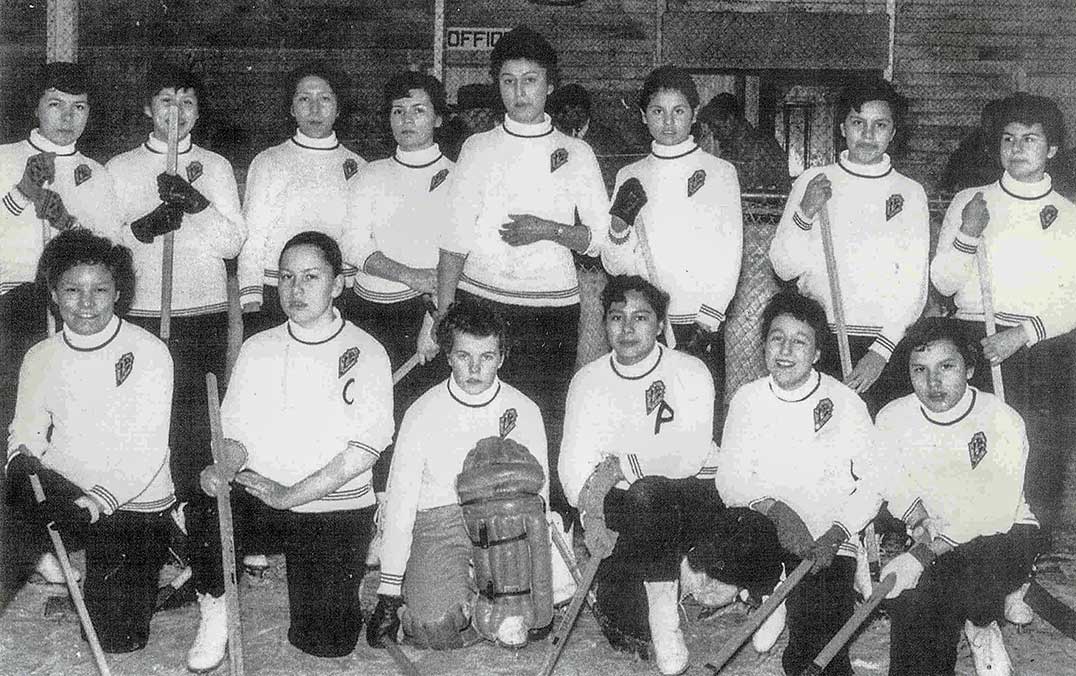
“His son, grandfather Sam Beaucage, married Anne Dokum of South Bay, grew vegetables, hunted wild game and fished. They had two working horses, another for the buggy, several pigs and one cow. Their daughter Evelyn became my mother. She had one brother, Benedict.” At that time, tradition held that between Christmas and New Year’s, nimkwaadahding, parents and children would visit other families and get little treats.
Evelyn left home, in Kaboni, at seven to attend residential school in Spanish. She completed her Grade 8 there and began to work at the Mansion House (now the Anchor Inn) in Little Current at 15. Daughter Marion was born in Wiikwemkoong on April 8, 1940 to a young Evelyn. “When I was one, my mother left for the States and my grandparents raised me.” Marion saw her mother again about 12 years later. “I didn’t know her. She seemed just like another person. I was closer to my grandparents and my uncle Benedict.”
“I was sick a lot, and the Kaboni school was far away, so I didn’t start school until I was seven.” Marion started at the Day School in Wiky in September and a year later, in October, she was moved to Spanish. “Before I was taken to Spanish, grandmother cut my hair short, but the nuns cut my hair even shorter and put coal oil on all our heads for lice, even though my grandmother had made sure that I was not infected before I left.”
“I was severely tested at times, but I managed to weather the storms and some of the nuns were nice. Sad times also gave way to fun times, playing games, sports and speaking Anishinaabemowin when I could. We were given uniforms and I slowly learned to cope with the new rules.” Marion developed what she refers to as a ‘mental block’ to deal with the changes in her life. “We were punished for using our language, so we used it only when alone in the foothills for an excursion.”
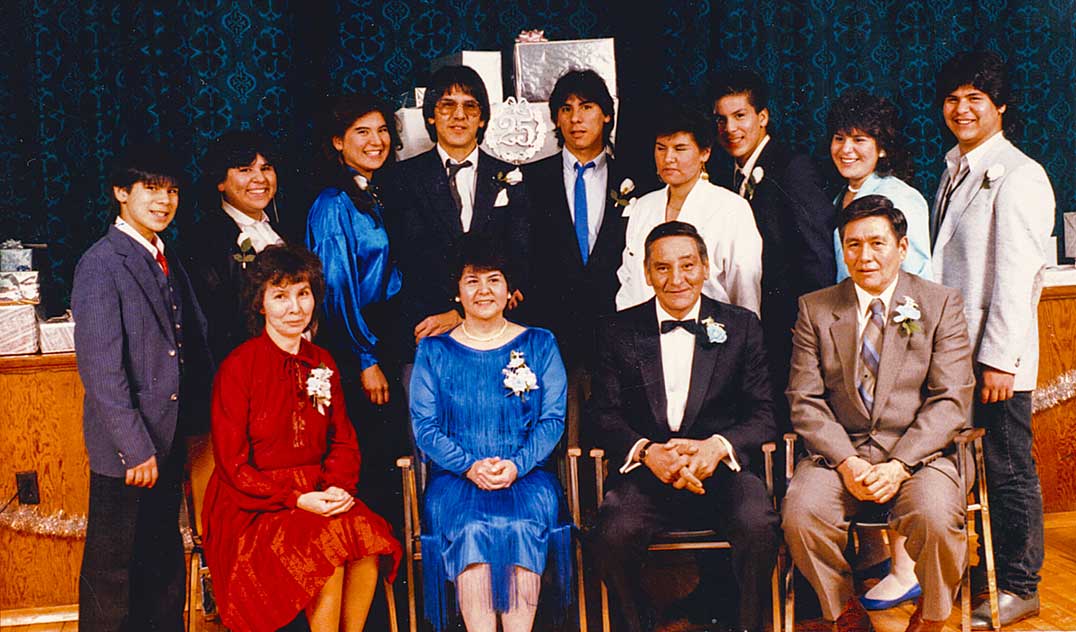
Marion recalls a girl from home having an epileptic seizure on the floor. “My grandmother had explained this disease and how you need to protect people. The other kids, confused, started to kick her. I yelled at them to stop and began to push them away, kicking at the kids who were hurting the girl. Unfortunately, the nuns saw me and punished me instead. I couldn’t explain myself.”
Marion also recalls a time when she got on the bannister to slide down. She was punished. “I came to in a bed in a locked room. It wasn’t the infirmary nor the fourth floor where we slept. I became upset and tried to get out but couldn’t. I wound up with a concussion and some memory loss for a while.”
A third problem involved some new girls from Christian Island. “One day they wanted to go to town. I suggested that they ask the nun, the prefect, for permission, adding, ‘you can offer to take in the mail bag and pick up new mail.’ The girls insisted that the nun would say no because she had caught them smoking earlier. They said they were hungry and tired of school food. I told them I would take them on Sunday when we were out for our walk.”
“We met on Sunday and went into town. The girls bought some fruit and we enjoyed ourselves for a while. We were spotted. Back at the school, punishment was waiting. The new girls got reprimanded but I was punished as a seasoned student. For one month, I could not attend any social events including our monthly dances, hosted alternately by the girls’ school and the boys’ school across the road. That was significant penance.”
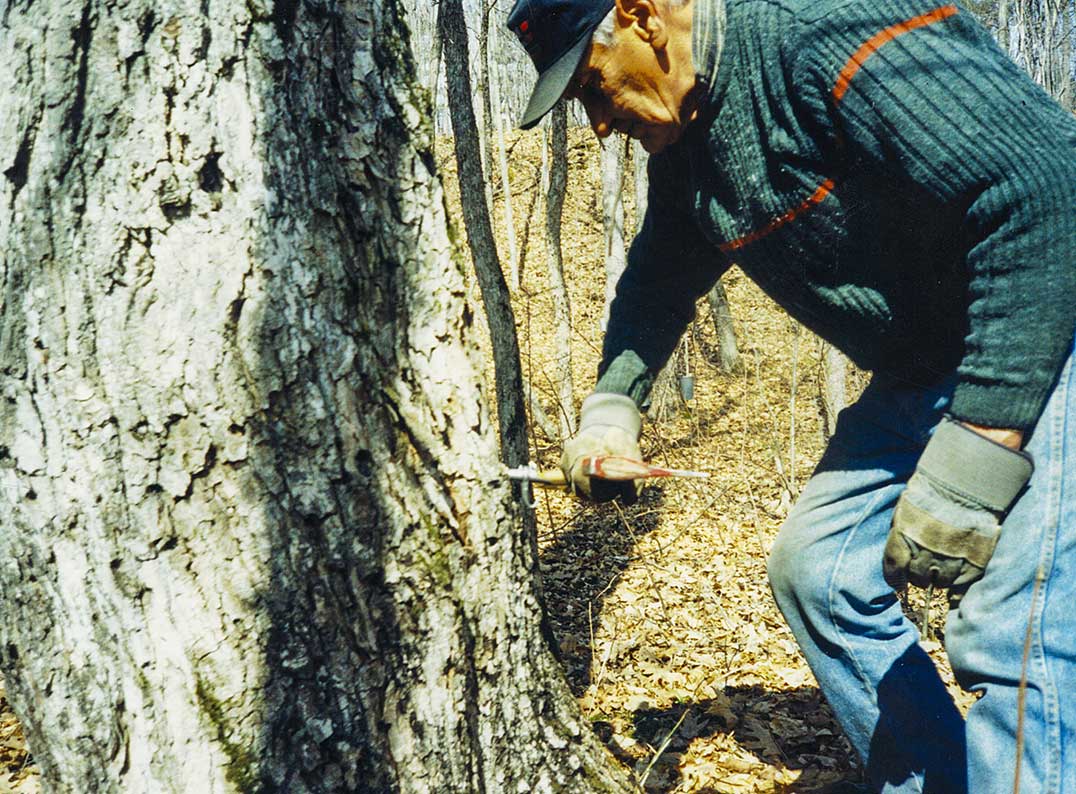
Mornings started with church at 6 am, except on Mondays when they had a fire drill and they could sleep a little longer. Breakfast was oatmeal with milk and brown sugar. Classes started at 9 am until 4 pm with an hour off for lunch. Shepherd’s pie was a staple at noon. Sometimes the meat was not fresh. Marion got to hate it and never eats it now.
“After school we got a snack, like an apple, carrot, half a cabbage leaf or a slice of turnip. On Sundays we got cookies. Then it was off to work in the kitchen, the laundry, sewing room or general cleaning. Supper was usually meat and potatoes. Sundays we got baloney and sauerkraut. I remember helping to grind the cabbage for that dish. We also peeled a lot of potatoes.”
“After 7 pm we had ‘recreation’ which was usually reading or playing games like cards, pick-up-sticks, or Chinese checkers. In the summer it was softball or walking. Sometimes we went to the mountain, the foothills of La Cloche, at the back of the school. We used this time, away from the ears of the nuns, to speak our language.”
After Grade 10, Marion and one other girl, Alice, were taken out of classes to help teach the Grade 1 children. “The Anishinabe instructor had left at Christmas, so we were asked to teach the kids phonics, the alphabet and nursery rhymes for half a day. The nuns would take over the other half day. I lost more class time due to jaundice, which meant one month of isolation.”
“We had spent time in the chicken coop, gathering eggs and changing the bedding for the chickens. We didn’t always wash our hands afterwards but liked to make some toast as a treat. Later, when I tested positive in Aundeck Omni Kaning for having been exposed to hepatitis, I figured it all out. They asked me if I had worked with chickens earlier in my life.”
Despite missing so much school, Marion passed the government test for entrance to Grade 11 with some help from a teacher. “That summer I worked in Little Current at the hospital for the Sisters of St. Joseph’s. The Mother Superior was very strict and we had a curfew. We cleaned bed pans, gave back rubs, made beds and did tasks as assigned.” In the fall, Marion headed for North Bay to finish Grade 12 and enroll in St. Joseph’s College. “It was easier to get enrolled because I had already worked for the St. Joseph’s order in Little Current. I had connections,” Marion adds, smiling.
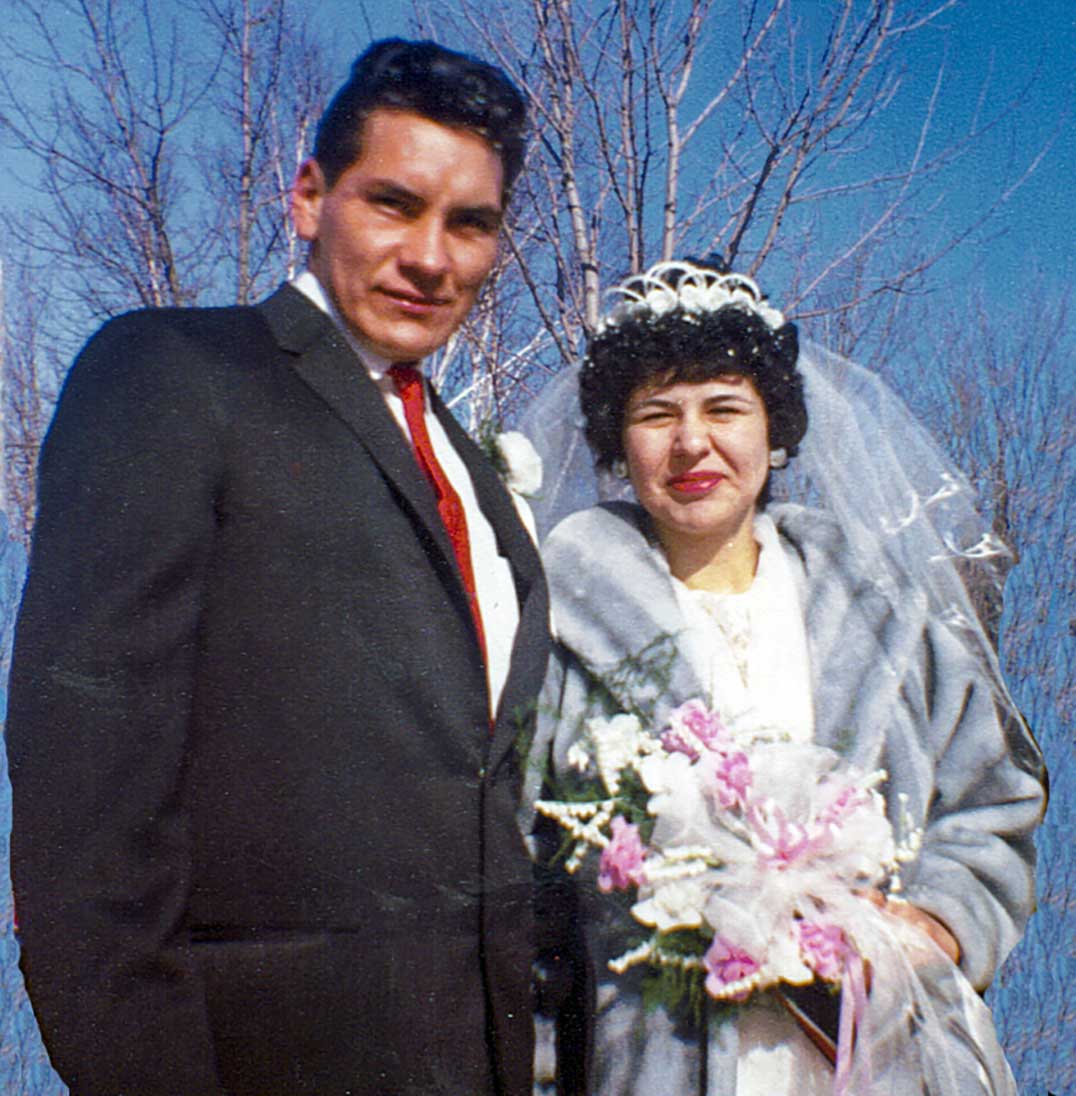
“Just after I started in North Bay, the student councillor of Indian Affairs and the head teacher of Spanish came to North Bay to take me back to Spanish, but I refused to go. They said they wouldn’t pay for my tuition in North Bay, so I told them I would earn the tuition myself and they left. In hindsight, INAC did pay for my tuition.”
After high school, Marion enrolled in the three-year program at the School of Nursing in North Bay, also run by the Sisters of St. Joseph’s. “After one year, administration insisted on seeing my birth certificate. I didn’t have one; just a baptismal certificate and a status card. The Sisters put me on the train to Little Current. I headed for the municipal office to apply for a birth certificate. The lady there insisted that I needed my mother’s signature. I had only seen my mother once in 18 years. My grandparents, who had raised me, couldn’t sign for her, so I had to go back to North Bay empty-handed and I couldn’t finish the three-year course.”
In 1959, Marion returned to Manitoulin where she could still work in the local hospital. She met her husband-to-be, Murray McGregor, at a dance in M’Chigeeng. “I had known him before, but now he swept me off my feet,” she shared with a sparkle in her eye. The couple was married two years later, on February 11, 1961 at the Catholic Church in Birch Island. “It was a sunny day and we made our vows in front of family, at 10 am when the priest was available.” Most of Birch Island came to the reception at the community centre. In those days, priests announced weddings to everybody three weeks in advance. Murray’s sisters did a lot of the cooking for the reception and others brought food too.
Murray was born on March 16, 1939 to Julia (Recollet) and William McGregor in Birch Island. “My mom was from Rabbit Island in Wiikwemkoong.” Murray was the youngest of 12, nine sisters and two brothers. Both parents were hard workers. “My dad was chief here for over 30 years. He was also the organist for this community.”
Murray remembers getting on the train to Little Current to visit a dentist. “I was angry when he broke all my teeth off. I found out later that the government would only pay to remove teeth, not fix them,” he shared. “I went to Grade 8 in Birch Island and high school in Little Current until I quit, in Grade 11. I finished it and Grade 12 later.” He took community courses in carpentry, welding, social counselling and band economic development.
“You could make good money at INCO, but I didn’t like the city or the work, so I put a down-payment on a chainsaw and headed for the bush to cut pulpwood for Hocken’s Lumber Mill at nearby Swift Current and then KVP, the Kalamazoo Vegetable Parchment Company (now Domtar) in Espanola. In the summers, I worked for Ontario Hydro, helping Clarence (Smitty) Smith, who ran the supply boat for hydro crews in McGregor Bay and Killarney.”
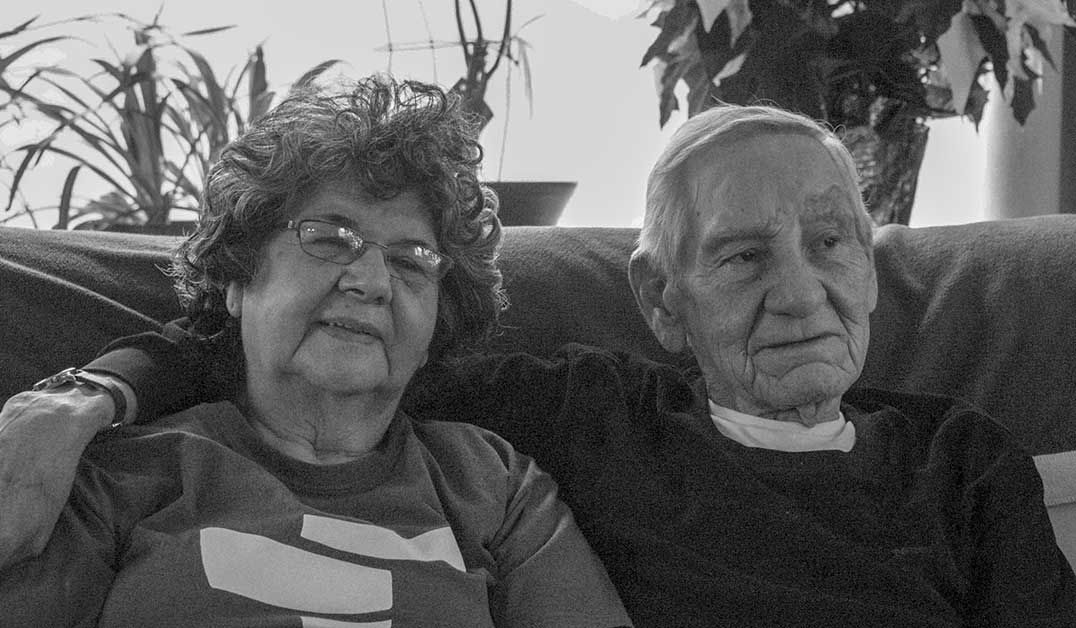
After the wedding, the couple spent the next three years living with Murray’s parents in the yellow house beside the church. Summers found them in the bush cabin behind the church. Over the years, the couple had 10 children: William, Debra, Elizabeth, Darrell, Leslie, Murray Jr., Lorrilee, Derek, Stephen and little Hillary who sadly drowned at age three.
“Murray also started to build our house here and we moved in in 1963. We had someone do the framing, plumbing and electrical, but we did the rest.” Murray even cut and planed his own lumber. Twenty years ago, the family added the big room to accommodate the large family. “We always made time for the children. One of my favourite outings was getting the kids into our flat-bottomed boat and going for picnics. They would all swim together. I enjoyed reading to them too.”
Murray was a band councillor for many years when Jim McGregor was chief and then later when Franklin Paibomsai was chief. (He was recently re-elected to the chief’s position.) Murray was an Espanola School Board trustee and was involved in lands, police, parish and Anishinaabe spiritual councils. He is a traditional environmentalist, hunter, fisherman and wood cutter who also worked in road construction, driving a gravel truck for 13 years. “Each spring, for a few weeks, I would go to Armbro in Brampton, building roads while the work lasted, then find a place closer to home for the rest of the summer. In the winter, it was back to logging.” About 17 years of truck driving for Lafarge Canada came later, until the cold encouraged him to retire.
Marion became a supply teacher, knowing for the next two summers she would take training, including practicum placements and theory, in Hamilton at the teachers’ college at McMaster University. INAC paid for this training and her accommodations. “I was hired right away by band council to teach Grade 2 in my own community.” Marion shares, “The following year, I became the principal for the school and stayed for 25 years until I retired in 2000.”
She worked part-time for the Anishinaabek Educational Institute, Espanola Hospital as a band member, and volunteered for the Whitefish River Elders Group. Marion helped former Chief Leona Nahwegahbow with the Children’s Aid Society while she was a band councillor for four years, advocating for children to stay in their own communities, worked to prevent Ontario Hydro from spraying herbicides in their community, the mill at Espanola from dumping chemicals into the Spanish River, worked to prevent educational cutbacks for Kindergarten and post-secondary training, and encouraged the government to include a Native curriculum, culture and language, PONA.
“My strengths? I seem to have boundless energy and I love to share my story. When Debra was professor at the University of Toronto, I was invited to share my ‘My Life in Residential School’ at universities, public school and conferences. As a teacher, I encouraged role playing to teach my charges about the residential period of my life, so they would understand. Some children became parents or kids and others took on the role of the police, the Indian Agent or the priest. I miss teaching the students, especially their smiles and laughter which made my day.”
“We are very proud of our children and grandchildren. One of our children has passed away. All nine have good jobs except for one, due to a head injury. The four girls and their partners have university degrees, and two girls have earned PhDs. Three younger boys and their partners have a college education. Our children have chosen their paths and are following their life’s purpose to the best of their ability We are proud of their accomplishments in helping others, either through education or their line of work.”
“In 1991, an impaired driver hit a vibrant, athletic Darrell and confined him to a wheelchair. He still has a generous heart and a strong will to succeed, despite his being tested daily with limited mobility, impaired vision and cognitive decline. Darrell is always happy to have visitors and especially enjoys the company of others to watch sports on the television. He is an inspiration and a role model. I admire his strength to live each day at a time.”
The kids use the camp in McGregor Bay more now. Maple sugaring time is always combined with a fish fry by Murray Junior. “I like all seasons except the slippery one,” adds Marion, grinning. “As for travelling, we have been to both coasts, also to the Northwest Territories and Moose Factory via the Polar Bear Express from Cochrane to Moosonee. Marion laughs as she recalls their children making up stories of the far north for the other tourists on the train. They were quite believable and entertaining, even if their recollections were from a more southerly region.”
Presently she is connecting with ‘Finding Our Path Together’ Sudbury Public Health and the Elders’ Advisory Council for Kina Gbezhgomi. She also loves to volunteer for the TEK Elders and Youth Activist group, a newly-formed liaison to help seniors with technical issues and youth with issues important to them. “I attend meetings to help with fundraising,” Marion explains. She is also part of the local Alzheimer’s group, testing seniors and translating tests. “Our goal is to simplify the process and avoid misdiagnoses in order to provide the best training for individuals.”
Murray enjoys just being in the bush. “What are my strengths? I am told that I am a good listener. I have been involved in the 12-step program, inviting people to take what they wish from my story.” Marion adds, “he has always been a very good provider, through hunting and fishing.”
“Our hope for the future is that the environment will not be destroyed with chemicals for our next generations. We feel the aerial spraying of herbicides is killing our birds and animals. I recall the dead deer two decades ago; it died after drinking water from an area that had been sprayed with toxins by a developer. Once the animals are gone, humanity will starve.”
“Manitoulin and Birch Island are special parts of the world. Tourists come here and tell us this is God’s country. We have been to many places in the world, including Nunavut, Hawaii, Mexico, parts of the States and Europe, but this place is still the most beautiful. We can be in our community and disappear in the bush five minutes later. Toronto is all cement, we would be lost there. All the children have come back home except for Debra, who is still in Toronto. This is a place to share laughter and stories. A place like no other. We will never leave here.”



